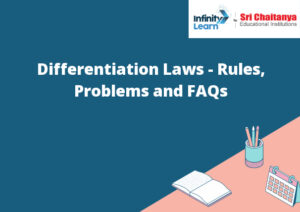Table of Contents
What are Derivatives?
A derivative is a security or financial instrument whose value is based on, or “derived” from, the value of an underlying asset, index, or reference rate. The underlying asset, index, or reference rate can be a single security, a basket of securities, an index, or a reference rate. Derivatives can be used for hedging (protecting against losses) or for speculation (taking advantage of price movements).
The most common types of derivatives are futures, options, and swaps. Futures are contracts to buy or sell an underlying asset, index, or reference rate at a future date. Options are contracts that give the holder the right, but not the obligation, to buy or sell an underlying asset, index, or reference rate at a future date. Swaps are contracts to exchange one type of financial instrument for another at a future date.

1) Constant Rule
: A constant rule is a rule that always produces the same output for a given input. For example, the rule “add 2 to every number” is a constant rule, because for any number x, the output will always be 2x. 2) Recursive Rule : A recursive rule is a rule that produces a new output based on the previous output. For example, the rule “multiply by 2 every time” is a recursive rule, because for any number x, the output will be 2×2, then 2×4, then 2×8, and so on.
2) Differentiation of a Function is Linear.
Differentiation of a function is linear if the derivative of the function is a linear function of the input variable. This means that the derivative of the function can be expressed as a linear combination of the derivatives of the individual input variables.
3) Product Rule
The product rule states that the derivative of the product of two functions is the product of the derivatives of the individual functions.
(4) Quotient Rule
The quotient rule states that the derivative of the quotient of two functions is the derivative of the numerator minus the derivative of the denominator multiplied by the quotient of the two functions.
4) Chain Rule
The chain rule states that the derivative of the composite function of two functions is the derivative of the first function multiplied by the derivative of the second function.
The chain rule can be represented using the following notation:
where “f” and “g” are functions, and “d” is the derivative.
The chain rule can be applied to functions of more than two variables.
5) Polynomial or Elementary Power Rule
This rule states that the derivative of a polynomial is the sum of the derivatives of the individual terms in the polynomial. The derivative of an elementary power is the product of the derivative of the power and the coefficient of the power.
6) Quotient Rule
The Quotient Rule states that:
The derivative of the quotient of two functions is the derivative of the first function divided by the derivative of the second function.
In symbols:
where:
is the derivative of
Proof
We will use the definition of the derivative to prove the quotient rule.
We have:
We also have:
And so:
7) The Derivative of Trigonometric Functions
The derivative of a trigonometric function is a function that is the derivative of the original function. The derivative of a trigonometric function is found by taking the derivative of the function and then applying the chain rule.
The derivative of a trigonometric function can be used to find the instantaneous rate of change of the function at a certain point in time. This can be helpful in solving problems that require calculus.
8) The Derivative of an Exponential Function
The derivative of an exponential function is given by the following equation:
The derivative of an exponential function is equal to the product of the derivative of the base and the derivative of the exponent.
9) The Derivative of Logarithmic Functions
The derivative of the logarithmic function can be found by taking the derivative of the natural logarithm function.
The derivative of the natural logarithm function is:
The derivative of the logarithmic function is:
Problems on Calculus Differentiation Rules
1. Find the derivative of \begin{align*}f(x) = x^3\end{align*}
The derivative of \begin{align*}x^3\end{align*} is \begin{align*}3x^2\end{align*}.
2. Find the derivative of \begin{align*}f(x) = 3x^2\end{align*}
The derivative of \begin{align*}3x^2\end{align*} is \begin{align*}6x\end{align*}.
3. Find the derivative of \begin{align*}f(x) = x^5\end{align*}
The derivative of \begin{align*}x^5\end{align*} is \begin{align*}5x^4\end{align*}.
4. Find the derivative of \begin{align*}f(x) = sin(x)\end{align*}
The derivative of \begin{align*}sin(x)\end{align*} is \begin{align*}cos(x)\end{align*}.
5. Find the derivative of \begin{align*}f(x) = x^4\end{align*}
The derivative of \begin{align*}x^








